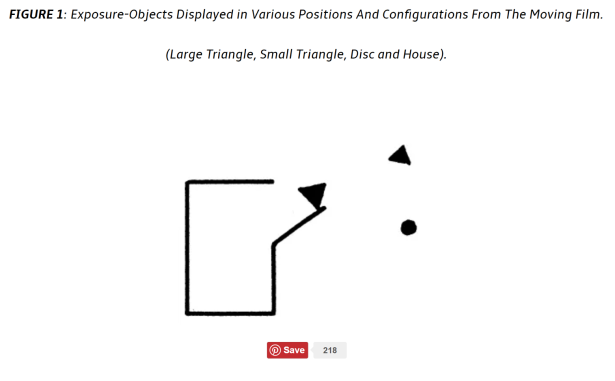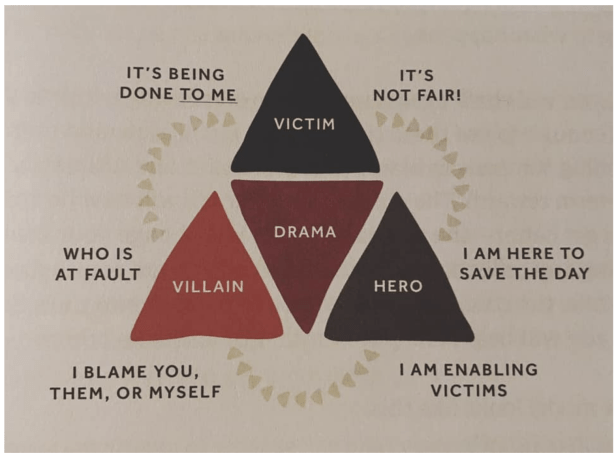Quick Overview:
- Life’s complicated, so we simplify it into digestible chunks.
- One way to do that is with representations of reality, which remove some of the complexity of real life – like Black and White thinking.
- A similarly simple structure called the Hero Victim Villain (which I’ll abbreviate to HVV) model has been used throughout history to tell stories.
- Heroes defend Victims against Villains. We believe these kinds of stories because we recognise that there is some truth to them.
- Together, the HVV and HoV models can be used to explain the basis of Cancel Culture.
The HVV Model – Hero Villain Victim
To examine Cancel Culture, I covered the Hierarchy Of Victims (HoV) in the first article of this series. In this article, I want to write about another model which interacts with the HoV model, the “Hero, Villain, Victim” framework.
Life is a complicated thing. We simplify some of our problems to turn the world into a concept we can understand. The simplest way to do that is with a binary approach called “black-and-white thinking.” Add one additional element of complexity to that, and you’ll get a three-cornered triangle involving a Hero, a Villain and a Victim. This is the HVV model.
Some call it a drama triangle because the HVV model has been used in storytelling for a long time. It forms the basis of many fairy and Disney tales. Some suggest that this three-cornered simplification of human relationships is so prevalent in our culture that it is ‘deeply embedded in our subconscious’. There is some evidence to support that belief. In fact, many people play these roles in their own real lives.
Evidence which supports the ‘innateness’ of the drama triangle to human thinking
In a famous experiment from the world of psychology, a scientist called Fritz Heider conducted a test.
Heider showed his test subjects a two-and-a-half-minute video of 3 geometric shapes moving around a rectangle. At times, the rectangle would change shape, and a ‘door’ (simply a gap in the structure of the rectangle) would appear.

This is a freeze frame from the video showing the shapes and an open door.
Source : As above.
When asked to describe and interpret what they’d seen, the people who had watched the video described a belligerent, angry shape, a heroic shape and a shape which had been poorly treated (by the belligerent angry shape). They simply made up a story and assigned characters to the shapes. There was no explanation or voiceover; nothing was done to lead the people watching the video down any particular path. And yet, the characters they assigned to these shapes formed the corners of the HVV model.
The HVV model is nice and simple for people to understand
In the HVV mode, each of the three corners of the triangle – Hero, Villain and Victim – are character archetypes, representative examples of the ‘typical’ individuals we might expect to see in those positions. The simplicity and absolute nature of this setup are essential. To make the HVV system work, those telling the story around these characters must be extreme. For example, any Victim presented to the audience has to be completely innocent. There aren’t many Disney villains who have two kids in Cub Scouts and volunteer their time to charity on weekends. That would be too confusing. Villains are bad. Plain and simple.

My wife and I are re-watching the TV show Dallas, and I recognise some characters from the show in this triangle.
Source : Tumbler
Here are the archetypes and what they represent:
- Heroes:
A hero acts altruistically in the community’s interests until the problem facing the people is resolved. They are rewarded with respect from men and love from women. Taken too far, the Hero can be self-righteous and, some would say, become a self-righteous villain. Buzz Lightyear is a Hero. - Villains:
Might be a monster like Jaws, a dragon or a man like Hans Gruber in Die Hard. Villains are the dark side of society – and ourselves. They act selfishly and manipulate others. They’re irredeemable. The Hero has to defend victims from Villains. - Victims:
Someone who is judged or threatened. Victims need to be saved by a hero or society because they cannot save themselves. I would argue we have agreed to a hierarchy of victims according to how we value them.
In conclusion – this model is partly true.
These models are used in propaganda and as first-order approximations of what protagonists in a story are likely based on our culture’s experience. (As well as in stories and, as was seen in Heider’s experiment, appear to be built into our genes at some level as an innate belief about how the world works.) And that’s where part of the problem lies. There is truth to these characterisations and their roles, but the reality is not always that simple.
We all know heroic people. They are celebrated in society (and their dark side is not often shown – as a cancelled celebrity can tell you, today’s hero can be tomorrow’s villain.) We listen to the news; our soldiers are the heroes, and theirs are not. We have all been wronged by a villain. We know people who have behaved like a victim (including me, from time to time) and realise that the likelihood is – if they’ve done it in the past, they might well do it again.
The media loves to use the HVV model, and nowhere is it more prevalent than on social media. In the next article, I’ll explain how the HoV and HVV models are tied together as a tool on Facebook, Twitter and other platforms to create a ‘Cancel Culture’.
